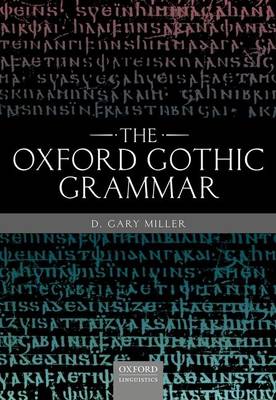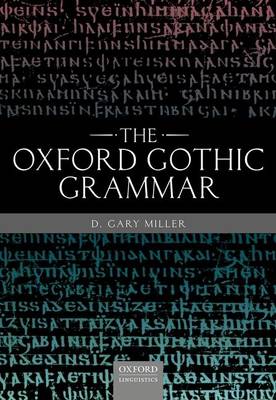
- Afhalen na 1 uur in een winkel met voorraad
- Gratis thuislevering in België vanaf € 30
- Ruim aanbod met 7 miljoen producten
- Afhalen na 1 uur in een winkel met voorraad
- Gratis thuislevering in België vanaf € 30
- Ruim aanbod met 7 miljoen producten
Zoeken
Omschrijving
This volume provides a comprehensive reference grammar of Gothic, the earliest attested language of the Germanic family (apart from runic inscriptions), dating to the fourth century. The bulk of the extant Gothic corpus is a translation of the Bible, of which only a portion remains, and which has been the focus of most previous works. This book is the first in English to also draw on the recently discovered Bologna fragment and Crimean graffiti, original Gothic texts that provide more insights into the language. Following an overview of the history of the Goths and the origin of the Gothic language, Gary Miller explores all the major topics in Gothic grammar, beginning with the alphabet and phonology, and proceeding through subjects such as case functions, prepositions and particles, compounding, derivation, and verbal and sentential syntax. He also presents a selection of Gothic texts with notes and vocabulary, and ends with a chapter on linearization, including an overview of Gothic in its Germanic context. The Oxford Gothic Grammar will be an invaluable reference for all Indo-Europeanists, Germanic scholars, and historical linguists, from advanced undergraduate level upwards.
Specificaties
Betrokkenen
- Auteur(s):
- Uitgeverij:
Inhoud
- Aantal bladzijden:
- 738
- Taal:
- Engels
Eigenschappen
- Productcode (EAN):
- 9780198813590
- Verschijningsdatum:
- 17/06/2019
- Uitvoering:
- Hardcover
- Formaat:
- Genaaid
- Afmetingen:
- 173 mm x 246 mm
- Gewicht:
- 1451 g

Alleen bij Standaard Boekhandel
+ 419 punten op je klantenkaart van Standaard Boekhandel
Beoordelingen
We publiceren alleen reviews die voldoen aan de voorwaarden voor reviews. Bekijk onze voorwaarden voor reviews.











